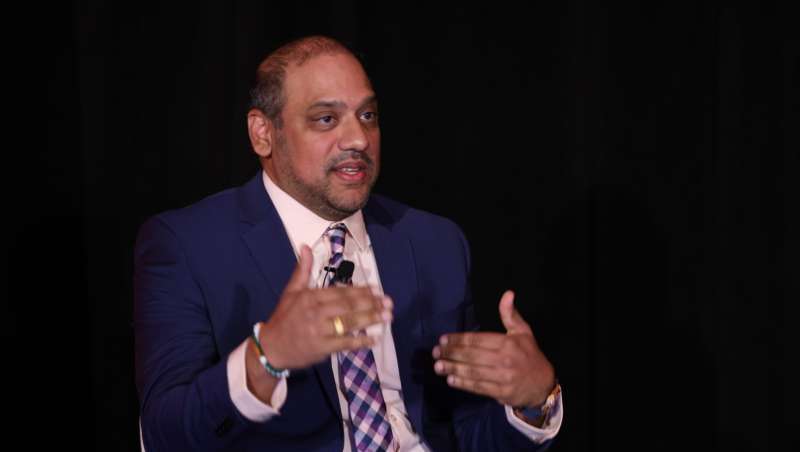
Vishnu Parasuraman, the Federal Hybrid Cloud Transformation OpenShift Offering Lead and Practice Lead at IBM, told attendees at the Red Hat Government Symposium on Nov. 9 that some quantum computing use cases for the Federal government are already well in focus, with potentially big payoffs as further use of the technology comes online.
At a higher level, Parasuraman advised to regard quantum computing as a means to help solve “very complicated problems with a lot of variables” that aren’t cheaply or easily solved with current-era classical computing.
“We’ve been conditioned to not try to solve very complicated problems with a lot of variables because we can’t do it,” he said. But quantum computing, he continued, “kind of opens the door to tackling all sorts of problems we probably haven’t even thought of yet.”
Some of those use cases, however, are already in view, the IBM official said.
“Areas that I think we can exploit pretty quickly are areas of forecasting, modeling, and supply chain in particular,” he said.
As an example, he talked about the need for the U.S. Postal Service to not only deliver mail, but also to collect it from all of those delivery locations, even when it’s unclear whether mail needs to be picked up from a customer location.
“You have to visit every address, whether there’s something there or not, so they have a very complicated problem,” he said. “So where do you position your postal branches [and] how do you most efficiently hit every single address in the neighborhood? Because they don’t know if you stuck a letter in there and raise the flag up right?” Quantum tech, he said, would be able to address that “very complicated problem” in order to yield benefits, including faster delivery times and cost savings.
Another quantum computing use case, Parasuraman suggested, lies in severe weather forecasting and the ability to more quickly “crunch the numbers” and release updates more rapidly for locations within a storm’s “cone of uncertainty.”
Currently, forecasters can produce an intermediary report every three hours, and a full updated advisory every six hours, he said. By applying quantum computing, he suggested, those updates might be compiled every 30 minutes to get more accurate data to people in a storm’s path.
“That’s where I’m really excited about the ability to impact people and save money, save lives. It’s all right there at your fingertips,” he said.
Parasuraman said the advent of quantum computing won’t be a “magic bullet,” but it will allow for solving complex math problems more quickly and efficiently, and that will lead to undertaking projects that are considered unrealistic with current computing abilities.
“It’s not going to make everything just like instantaneous, but anything that you’re doing that involves a lot of complexity, and a lot of variables that will take a classical computer a large amount of time to solve can be shortened significantly,” he said.
“A lot of the things that we could theoretically do with a classical computer,” he said, “we would never do because it’s too inefficient, it doesn’t make sense” because the amount of computing required would be too large.
But with quantum computing, those kinds of projects “all of a sudden become viable,” he said. “Edge computing, artificial intelligence, predictive analytics, all of that comes into play as something you can do more accurately and more efficiently, and then that makes it practical.”
